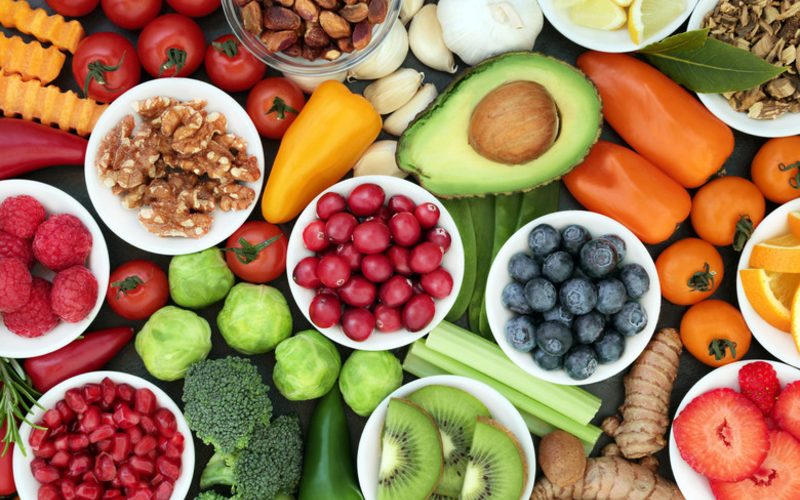Hand in hand: Healthy foods often reduce environmental impacts

Hand in hand: Healthy foods often reduce environmental impacts
Our diet matters for both our physical health and for the environment. Some foods can help with both.
Clark, Michael A., Marco Springmann, Jason Hill, and David Tilman. “Multiple health and environmental impacts of foods.” Proceedings of the National Academy of Sciences 116, no. 46 (2019): 23357-23362.
What do you plan to have for dinner? How about braised short ribs, sautéed kale, and spinach? But before putting on an apron and beginning to cook, most people probably don’t think about how these foods will affect both their health and the environment.
A group of researchers has tried to clearly link the health and environmental impacts of different foods. In a paper published in 2019 in Proceedings of the National Academy of Sciences, Michael Clark and his colleagues quantified and compared the health and environmental impacts of 15 different food groups. They assessed how these food groups affect five diet-related health outcomes: type II diabetes, stroke, coronary heart disease, colorectal cancer, and death; and five environmental outcomes: greenhouse gas emissions, land use, water scarcity, ocean acidification, and excess nutrients in water.
The study found that food groups with lower health risks also have fewer environmental impacts. For example, leafy green vegetables, such as kale and spinach, are associated with reduced risks of type II diabetes. They also have a smaller negative impact on land and water resources. In addition, Clark and his colleagues found that when foods have a low disease risk for one health outcome, they often have a low disease risk for other health outcomes. For example, nuts are found to have relatively low risks in all five health-related outcomes. Similarly, foods such as potatoes and fruits that are associated with a low impact for one environmental outcome tend to also have low impacts on the other environmental outcomes.
Clark and his colleagues found that red meat such as beef or pork is associated with the highest risks of disease and the most damaging environmental impacts. Fat in unprocessed red meats and nitrate and sodium in processed red meat can increase health risks. Additionally, red meat is 10 to 100 times more damaging to the environment than vegetables because production requires high inputs of feed, land, and water per serving. Furthermore, methane produced by cattle also intensifies global warming.
However, shifting to alternative food choices that lower both health and environmental impacts is complex. Fish is a healthy replacement for red meat, but its environmental tradeoffs can vary depending on whether it is farmed and how it is caught. Wild-caught fish have minimal impacts on freshwater and land uses while farmed fish demands similar amounts of freshwater and nutrients as red meat. Without detailed information about where that food came from, it is difficult for consumers to shift to alternative food choices that achieve a win-win outcome for both health and the environment.
Most western diets have large proportions of meat and processed foods and are often low in fruits and vegetables. Globally, food choices are starting to follow the same patterns, and if these trends continue, both human health and environmental sustainability will be at risk.
These findings could come into play the next time you prepare a meal. Consider including more leafy green vegetables and fruits and replacing short ribs with wild-caught salmon or an alternative plant-based protein that benefits both your health and the environment.
